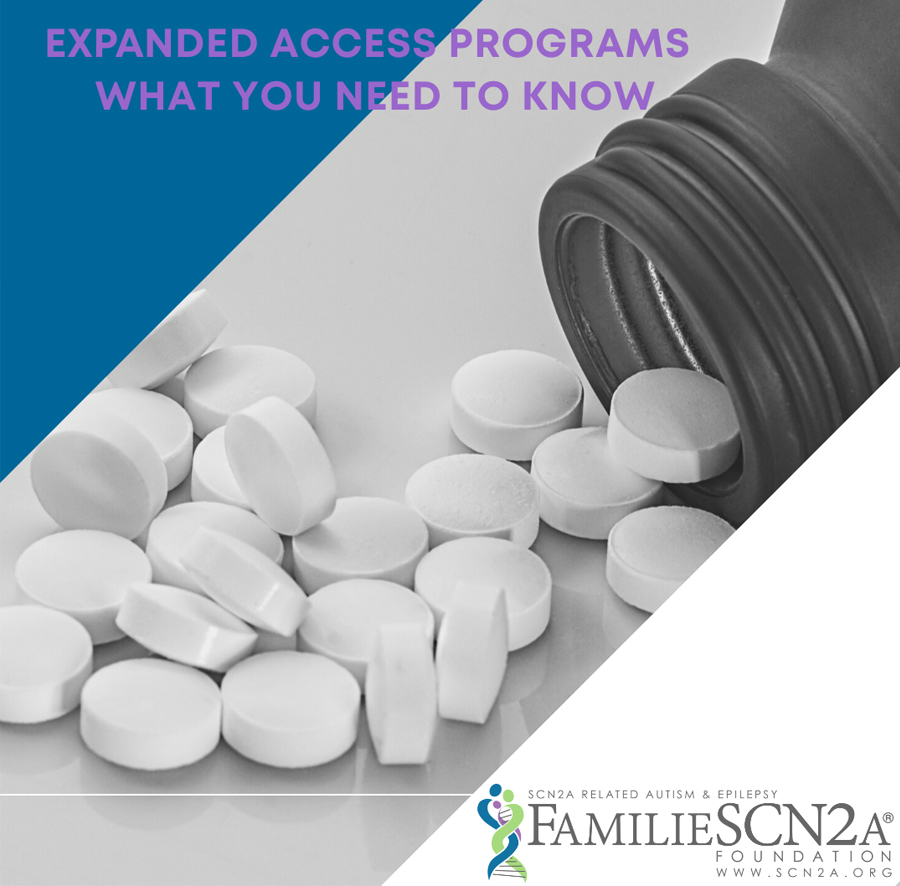
Expanded Access Programs, What you Need to Know
Expanded Access Program May Offer Drug Access to SCN2A Kiddos Prior to a Potential Drug Approval – Praxis has disclosed that they will be opening an Expanded Access Program (EAP) which may provide medication to patients while their drugs are still in clinical development (pre-FDA approval). Praxis has 1 medication potentially in clinical development for SCN2A (PRAX-562; a persistent sodium current blocker which could be beneficial for SCN2A gain-of-function variants) and two medications in pre-clinical development (1. PRAX-222 an antisense oligo (ASO) specific to SCN2A which could be beneficial to gain-of-function SNC2A variants, and 2. SCN2A-LOF (mechanism of action yet to be disclosed) that could potentially be beneficial to loss-of-function variants).
What are Expanded Access Programs (EAPs) – Prior to us families getting access to medications they typically need to be approved by the FDA. Two exceptions to this are 1. during clinical trials, and 2. when access is granted through an expanded or managed access program. The purpose of a clinical trial is to determine if both a drug is safe and effective. To accomplish this the patients allowed into the study are typically restricted to limit the variables of the trial and maximize the probability of success. Typically, EAPs and MAPs have more flexible criteria for eligibility relative to clinical trials.
What Should We as Caregivers Consider Before Applying for an EAP? – Drugs that are not approved by the FDA lack sufficient efficacy and or safety data to date to support FDA approval. This may just mean that more studies are required to prove the drug’s safety/efficacy profile, or it may mean that the drug is either not safe and/or not effective. Opting into a EAP means you are willing to accept the risk that the drug is not safe/effective to gain access earlier. Somethings that should be considered as caregivers include: 1. What are our goals for our kiddo and would this medicine help us get to that goal, 2. is my child in a stable enough position to wait for further development of this agent or others, 3. How strong is the clinical data to date for the medication in the EAP and how similar were the patients studied to my child, 4. Are there other options that make more sense to try first (such as other medications currently approved by the FDA), and 5. What does my child’s neurologist and primary care provider think?
How Would I Enroll into an EAP if Interested? – EAPs are typically accessed with the assistance of your child’s neurologist or other provider. Praxis’ eligibility criteria include: 1. Serious or life-threatening condition and is either no longer responsive to or no longer able to tolerate any available treatment option, and no comparable or satisfactory alternative treatment is available to treat the condition, 2. the medicine is in active clinical development with sufficient data available to and determine an appropriate dose and schedule for the patient’s specific condition (likely completed phase 1 study in SCN2A patients or currently in phase 2 studies in SCN2A), 3. a benefit-risk analysis, based on both the available clinical data as well as the requesting physician’s assessment of the individual patient’s condition and history, supports making the investigational drug available, 4. the patient is ineligible for participation in any ongoing clinical study of the investigational product, which includes lack of access due to geographic limitations, 5. making the investigational drug available will not negatively impact or delay the conduct of clinical trials or regulatory review or approval of the investigational drug for broader patient access, and 6. there is adequate supply of the investigational drug.
For More Detailed Information on the Praxis EAP – see https://praxismedicines.com/eap/

